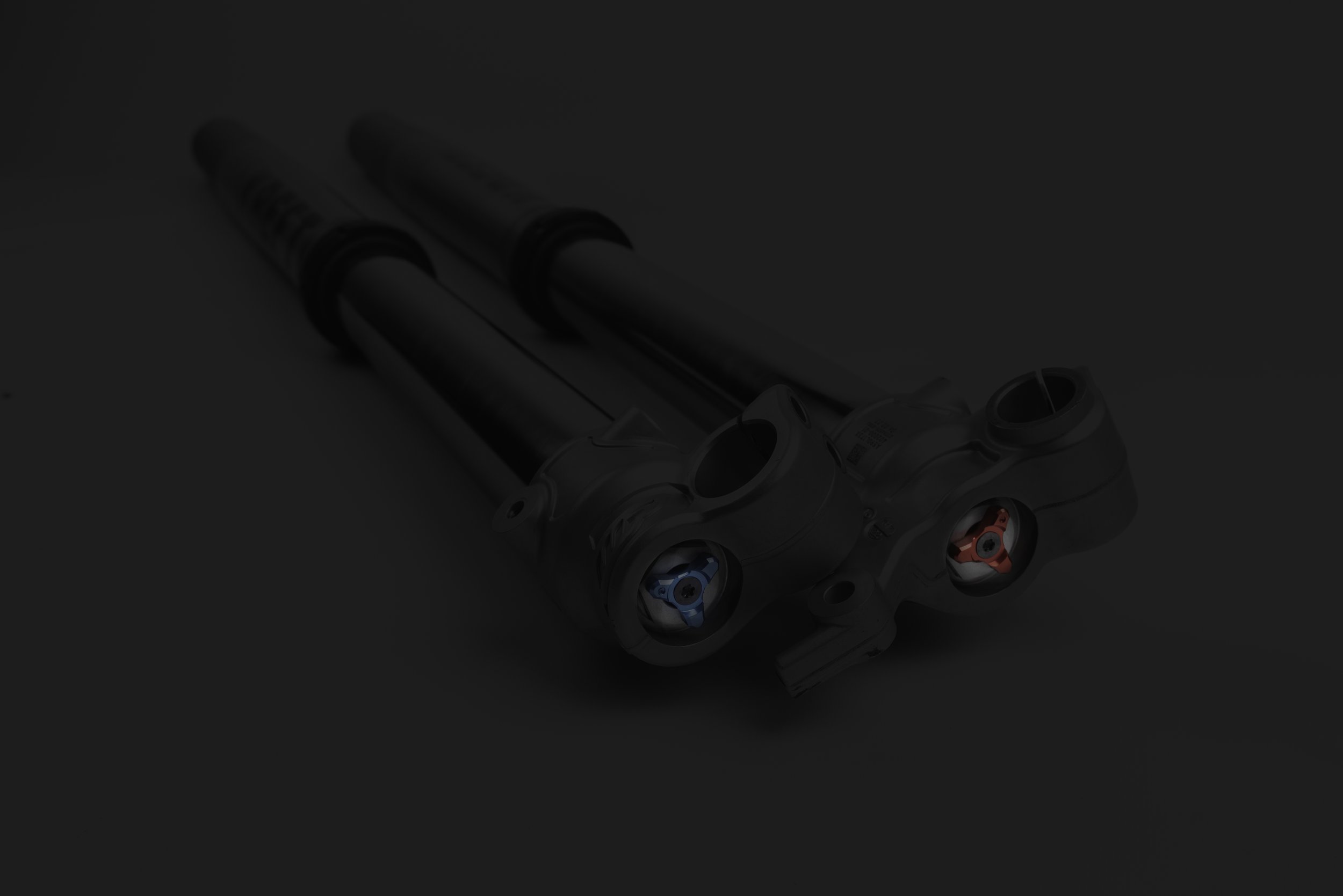
ULTIMATE ADJUSTABILITY
Kreft Moto’s ReValve Control allows riders to easily adjust mid-to-high speed compression damping utilizing an external adjuster. Quickly optimize suspension performance for changing track or trail conditions.
ULTIMATE ADJUSTABILITY
-

EXTERNAL MID-VALVE ADJUSTER
The overall damping curve is highly sensitive to mid-valve stiffness. Vehicle manufacturers and suspension tuners choose the mid-valve shim setting carefully to yield the desired damping characteristics.
With ReValve Control installed, disassembly is no longer required to adjust mid-valve stiffness. This puts an extremely powerful tuning tool within easy access of the user.
The effect of this adjustment on the damping curve is far greater than either low-speed compression adjusters or conventional high-speed compression adjusters. It combines the valve-stiffening system of a high speed compression adjuster with the sensitivity of the mid-valve. This type of adjuster has not developed previously because it is much more mechanically complex than other types of adjusters.
The base valve is usually secured near the end of a fork leg, and attached in a fixed position relative to the external components that surround it, so it is easier to access and has more room to build concentric adjustment systems.
The mid-valve is attached to the end of a long slender rod, far from any connection to the structural body of the fork, and it cycles back and forth within the cartridge at high speed. Accessing it is challenging. The problem is further complicated by the fact that the rebound adjuster mechanism resides in the same area, so adding an additional adjustment feature at this location requires a series of long concentric rods that turn inside one another.
-

LOW-SPEED DAMPING ADJUSTERS
Among the many innovations and improvements to suspension components, various external damping adjusters have been developed. External damping adjustments enable the user to fine-tune the suspension without disassembly. The most common type of damping adjuster is a needle and orifice valve that bypasses the main shim-controlled valve.
These adjusters are often called “clickers” because of the detent mechanism that makes them move in defined increments with a click. When the adjuster is fully closed, the needle shuts off oil flow through the orifice. As the adjuster is opened, the needle backs out the orifice and more oil can flow through.
Clickers change damping force by about the same amount at all suspension velocities. Proportionally speaking, they have a much greater impact on low speed damping because the total damping force is small at low speeds. For example, a two-pound change in damping force created by the adjuster is more significant when total damping force is five pounds rather than fifty pounds. For that reason, clickers are primarily low-speed damping adjusters. They have no direct effect on the main valves.
-

HIGH SPEED COMPRESSION
The high speed compression adjuster found on rear shock absorbers is a different type of damping adjuster. Rather than regulating the fluid flow bypassing the valve, a high speed adjuster provides a means of externally stiffening a shim stack.
A screw or dial mounted externally on the suspension is connected to a spring, which in turn applies pressure to the shim stack via a pressure plate. The pressure plate may press against the outermost shim, or against any of the other shims in the shim stack except for the smallest shim. If it presses against the outermost shim, the spring directly contributes towards resistance to shim-edge lift. If it presses against any smaller diameter shim (except for the smallest shim), the spring force changes to fulcrum point that the other shims bend around, which reduces shim bending leverage and stiffens the shim stack.
As the screw is turned in farther, the spring exerts greater force against the shim stack, and the stiffer the valve becomes. Because the high speed adjuster stiffens the shim stack, it alters the slope of the damping curve (a plot of suspension velocity vs. damping force). This is very different from the vertical shift of the damping curve caused by low-speed adjusters.
In practice, high speed adjusters usually affect low-speed damping, high-speed damping, and everything in between. A common high speed adjuster design incorporates both a high speed adjuster and a low speed adjuster into a single valve. The low speed adjuster needle and orifice is located at the center of the valve, with a high speed spring and pressure plate position concentric with the low speed adjuster screw. In the industry, this is called a dual compression control adjuster. High speed adjusters in use today are always located at the base valve, because the base valve is physically located in a fixed position relative to the external body of the suspension damper.
-

REBOUND ADJUSTERS
A low-speed rebound adjuster is a needle and orifice valve located at the mid-valve. Fluid usually flows both direction through the valve, and therefore it affects compression damping as well as rebound damping, but the effect on rebound damping is much more significant. This occurs because the rebound shim stack is clamped solidly against the piston face, so any fluid allowed to bypass the valve has a big impact on damping rates. However, fluid flowing in the compression direction already has a very large bypass in the form of the floating shim stack. Float is like a river of suspension oil; the rebound adjuster is like adding another small stream to that river.


